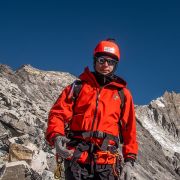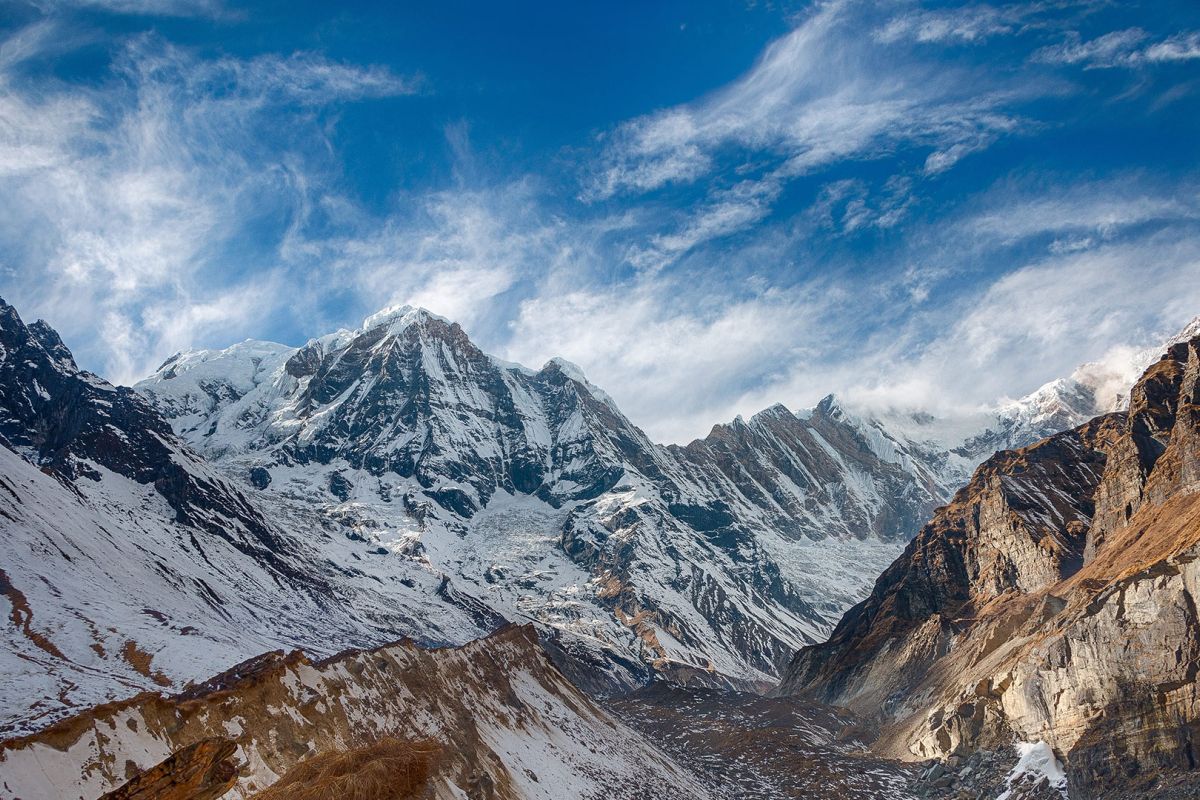Annapurna Circuit Trek (12-18 Days)
One of the best teahouse treks that also takes you over a high mountain pass.
-
Recommended: October to November OR March to April
Annapurna Circuit Trek Overview
The Annapurna circuit trek is a popular trek that will take you through a trail of diverse landscapes, dry cliffs, rural farming and subtropical rainforest. You can explore ancient village areas, Buddhist and Hindu temples and monasteries during this trek. The route will also welcome you with the scenic views of Himalayas like Dhaulagiri, Annapurna, Nilgiri, Machhapuchhare, Lamjung, Tukuche peak, Manaslu peak and Tilicho peak.
The Annapurna Circuit Trek has been considered as one of the best treks in the world, easily compared to the eternal treks like Everest Base Camp Trek or Langtang Valley Trek . This trek gives you a chance to experience the wonderful cultural and traditional lifestyle of both Hindu and Buddhist. From the lush vegetation of the Annapurna Conservation Area to the rarefied air of the high-altitude mountains itself, you’ll hike across a variety of unique temperature zones.
The Annapurna circuit trek also includes climbing Thorung La Pass (5,416m), traversing the world’s deepest gorge (Kali Gandaki Gorge), viewing the Himalayas at sunrise from Poon Hill, visiting Muktinath Temple (a significant Hindu and Buddhist pilgrimage site), and cooling off in Tatopani’s hot springs.
The route of Annapurna Circuit Trek will take you through a variety of climatic zones, passing through rice paddies, subtropical forests, rural farming, and glacial zones at altitudes ranging from 800m to 5,416m.
On the trek through the Mustang valleys, you will get the opportunity to learn about Tibetan culture. There is a slim chance of spotting a snow leopard and blue sheep in Yak Kharka. We’ll also stop in Tatopani, a popular hot springs destination where you can relax.
Best Time for Annapurna Circuit Trek
The months of October and November, or April and May for the Annapurna Circuit, are often regarded as the best times for trekking. When traveling to high altitudes during these two seasons, it is not too chilly because the weather usually remains clear and dry.
Annapurna Circuit Trek Elevation
The Annapurna Circuit trek rises from 600m to 5,416m at Thorong La High Pass. Thus, you will get the opportunity to see various flora and animals as well as constantly changing weather differences.
Annapurna Circuit Trek Accommodation
All of the guesthouses feature similar amenities. Unlike in Pokhara or Kathmandu, there are no upscale hotels along the route. Rooms are simple, with two single beds, blankets, and perhaps a table and a chair. Trekkers spend the most of their time in the dining room since it is the warmest space in the hotel.
Annapurna Circuit Trek Food
At high elevations, we highly recommend fluids such as green tea, lemon tea, hot lemon, ginger tea, garlic soup, and fresh vegetables. We also recommend trying dal (lentils), bhat (rice), tarkari (curry), momos (dumplings), and Chow Mein (noodles). Though there will be lots of non-veg things accessible in the trekking areas, we do not recommend them because the meat in such places may not be sanitary or healthful. We strongly advise you to avoid dairy, alcoholic beverages, caffeinated beverages, and hot chocolate.
Trip Highlights
-
As you approach the high Thorong La Pass, you can see the Annapurna Massif, Dhaulagiri, Manaslu, and Tilicho Peak.
-
Stunning views of Mt. Annapurna, Thorung Peak, Nilgiri, Chulu West, Chulu East, Tukuche Peak, Dhaulagiri, Lamjung Himal, Annapurna II, and Annapurna IV.
-
Visit Muktinath, a Buddhist and Hindu holy site famous for its never-ending glow and 108 stone faucets.
-
Passing through picturesque Gurung villages where you can meet locals and learn about their culture.
-
Visit Manang and Kagbeni, two stunning Tibetan-influenced villages.
-
Pass by the yak farms.
-
Natural hot springs near Tatopani where you may want to swim.
-
Visit the largest monastery in the Manang district, Barge Monastery.
Daily Itinerary
Our Travel Expert

Udaya Gartaula
+9779801026642
info@rolwalingtrek.com
Recommended Trekking Packages in Nepal
Cancellations & Refunds
At Rolwaling Trek, we just want our clients to have the best possible experiences. That’s why we don’t withhold deposits or have a fixed cancellation policy. We understand that sometimes life puts you in unexpected situations, so if you have to cancel or postpone a trip, there’s no need to worry.
If you need to change plans, please get in touch with us as soon as you can, and we will make the necessary arrangements to amend or cancel your trip. You can contact us at: +977 – 9801026642.
Notes
-
Trekking routes can be customised to suit your personal interests, abilities and time constraints.
-
If an area does not have good quality accommodation options, we can provide very comfortable camping-style accommodation for the duration of your journey.
-
Rolwaling also has a team of cooks who specialise in making Japanese cuisine, using authentic ingredients from Japan.
-
A lot of the fresh produce used in our dishes is sourced locally from growers in the trekking region.
Contact our Travel Expert
We pay special attention to your requirements and craft personalized getaways which showcases unique cultural, adventure and natural experiences of Nepal. We craft bespoke journeys for your expeditions & treks and also ensure you can experience the best that Nepal has to offer even for your shorter trips.





